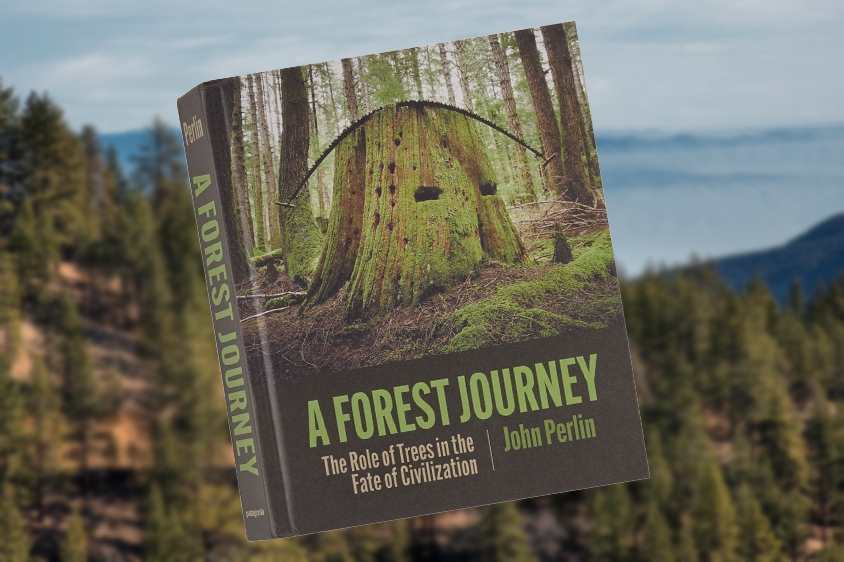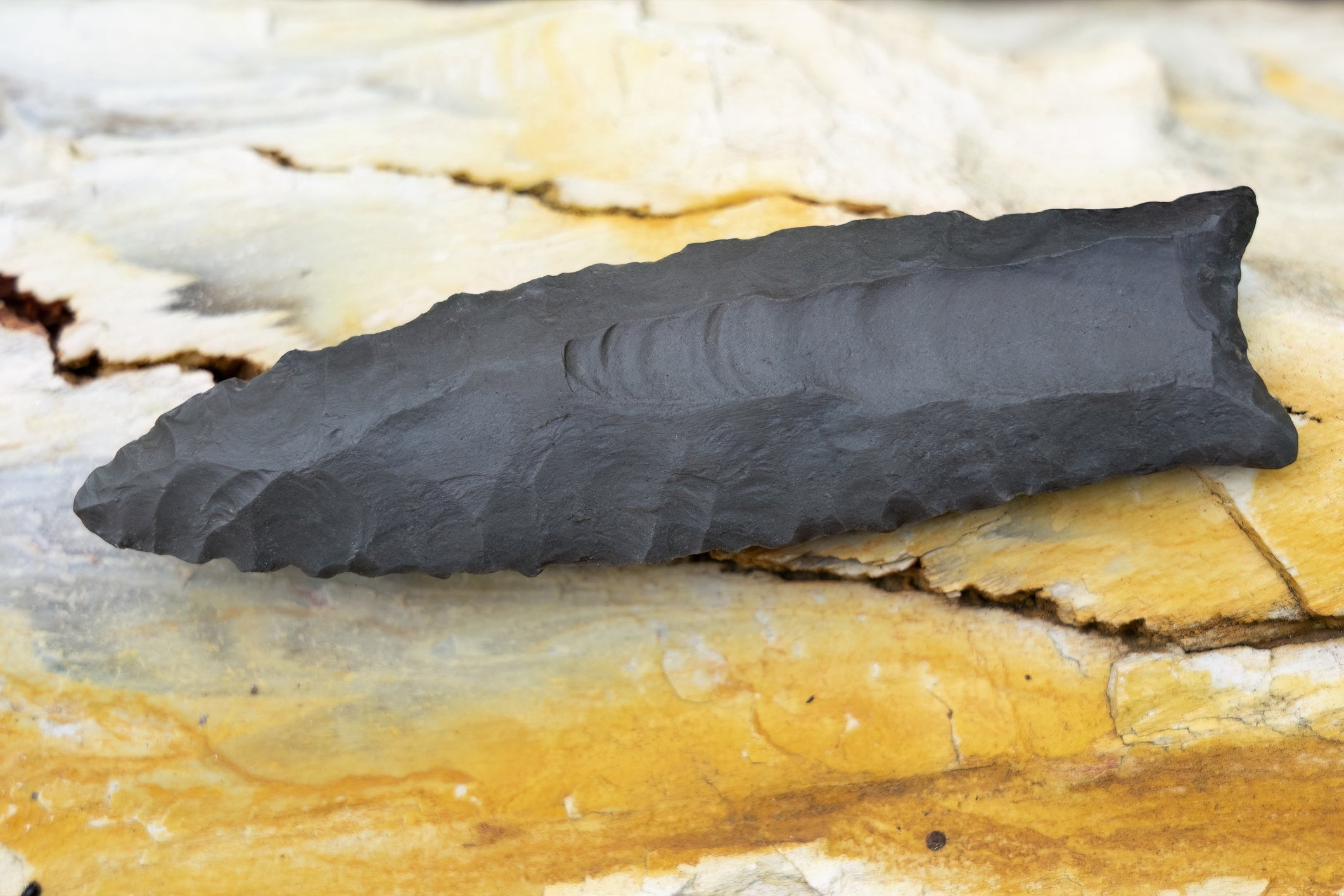
UC Santa Barbara’s John Perlin will discuss the inextricable link between civilization and forests
Where civilizations rise, forests flee. And where forests founder, civilizations fall.
That is the premise of “A Forest Journey: The Role of Trees in the Fate of Civilization” (Patagonia, 2023), a masterpiece by John Perlin, a visiting scholar in UC Santa Barbara’s physics department. Inspired by Perlin’s work, Patagonia Media partnered with the author to release an expanded and redesigned third edition.
In celebration, Perlin will discuss the book at 6:30 p.m. Wednesday, Feb. 1, at the Santa Barbara Museum of Natural History. The event is free and open to the public, but registration is required.
Humanity’s exploitation of the forests is a motif present in the founding stories of all civilization: from the cedar forests in the “Epic of Gilgamesh,” to the burning of the Khandava jungle in the “Mahabharata,” and Emperor Yao’s clearing of the Chinese woodlands in the “Book of Odes.” Simply put, “wood was the foundation upon which most societies were built,” Perlin writes.
“A Forest Journey” is as ambitious and comprehensive as its title suggests, imbued by its author with 40 years of expertise. The book spans the depths of human civilization, touching occasionally even further, to prehistoric events and the progenitors of our planet’s trees 385 million years ago. Their loss, he contends, was a major cause of the end-Permian extinction, when complex life nearly vanished from the Earth.
“I hoped to teach people a whole new history,” said Perlin, “rather than the conquests of armies, history is run by forests.” Wood, he demonstrates, has been the foundation of civilization. It provided materials for our buildings, our ships and our carts. Wood turned stone and blade into true tools of trade, farming and warfare. It fueled the flames that cooked our food, smelted our ores and fired our glassware and ceramics. Wood was the most common tool of the Stone Age. And charcoal, a derivative of wood, ushered in revolutions of copper, bronze, iron and steel thereafter.
Perlin tracks the ascendency of empires as they tap into bountiful timber supplies to exert their influence across land and sea. And he follows their decline as their resources run out, passing the torch to the next group of people, ready with wood aplenty.
The book reveals bygone landscapes of great forests that covered so many places where we’ve come to expect only shrubby hills or tended fields. For instance, the Hercynian Forest in Europe: “In Caesar’s time it was so vast that no one even knew its boundaries,” Perlin said. It may have stretched from north-western Germany east to modern-day Romania. Now only relicts remain — such as the Black Forest and Ardennes — scattered among the continent’s cities and farmland.

As for why past civilizations didn’t make a larger effort to cultivate timber: “It was easier to conquer than to replant,” Perlin said. “It takes a long time to grow a tree.” And as societies expanded, they needed more land for settlements and agriculture.
The book’s third edition includes 156 pages of new material and illustrations. The additions follow the story of forests to Africa, China and India, and stretch the tale back hundreds of millions of years. Perlin discusses recent discoveries of steel-making in ancient Western Africa, Minoan Crete and Mycenaean Greece that shed light on the effect that timber resources and deforestation had on the fortunes of these bygone societies. In fact, wood scarcity led some of these peoples to begin using coal, pushing back the first documented use of fossil fuels by thousands of years.
In 2014, archaeologists discovered a new part of the “Epic of Gilgamesh.” It portrays the forest as a living place and tells of the remorse of Enkidu, who had led his friend Gilgamesh to cut down the sacred cedar forest. “He says ‘we’ve turned the forest into a wasteland,’” Perlin recounted. “‘How will we answer to our god?’”
Scientists, too, have learned more about the role of forests in Earth’s biosphere since the first edition of “A Forest Journey” came out in 1989. For instance, they used to believe all of the planet’s rain came from evaporation over the oceans. But we have now learned that forests can create their own precipitation: Transpiration from leaves pumps water into the atmosphere where it can rain back down upon the earth, even in places far afield.
What’s more, forests function as a crucial carbon sink, Perlin explained. Trees sequester carbon from the atmosphere in their massive trunks. Meanwhile, their roots unlock nutrients like calcium and magnesium. These interact with the carbonic acid in rainwater to create carbonate rocks, which lock carbon as limestone and magnesite for tens of millions of years.
“We have to consider, basically, that our lives depend on us not making the same mistakes that we’ve repeated over the last thousands of years,” Perlin said. To this point, he adopts a straightforward urgency in his call to steward the planet’s woodlands. He alludes to myths of yore, to the fall of once mighty empires, and even to the greatest mass extinction event in Earth’s history to warn of dire consequences should we continue deforestation.

“The story of Gilgamesh has been repeated throughout history,” Perlin said. “Paul Bunyan is our Gilgamesh.” Indeed, Perlin found a perfect reflection of “A Forest Journey” in another piece of Americana: the Seal of the State of Indiana. In it, the sunrise of civilization crests over the hills in the east, while a man chops down Indiana’s last tree. Meanwhile, a wild bison flees before the march of humanity. “This is actually a summation of the whole book,” Perlin said.
“However, this book is more than just a chronicle of devastation,” he writes. “It describes the movement of civilization through a unique lens: one resource — wood.”
“We can learn from past mistakes,” he says a few pages later, “and break out of the cycle of deforestation and land degradation that undermined earlier civilizations.”
Harrison Tasoff
805-893-7220
harrisontasoff@ucsb.edu




